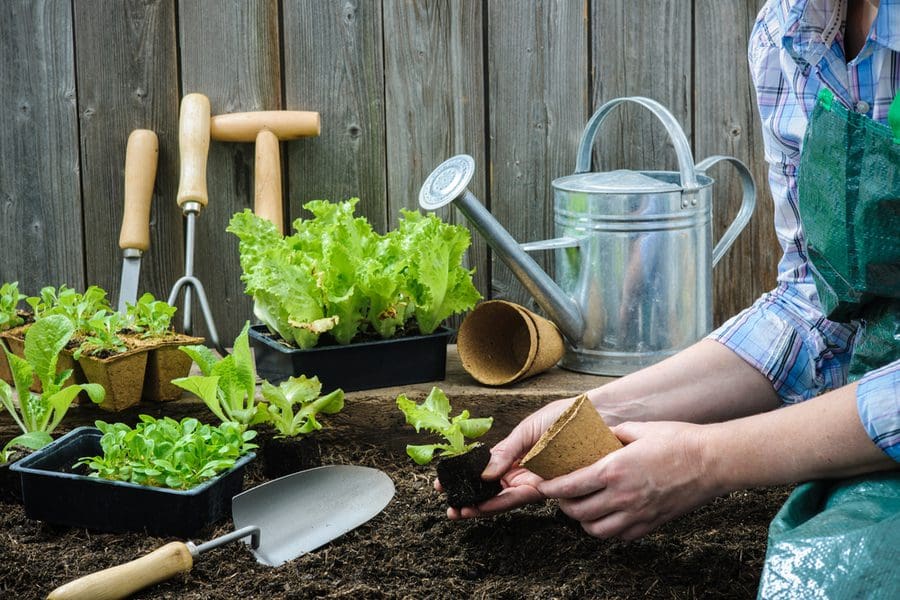Digging in dirt makes me happy. When I’m feeling anxious or depressed, gardening makes me forget what the problem is. Research says cortisol levels go down in a calm, green environment, and we feel less stressed. The simple act of caring for plants gives people a sense of control over a situation when they might feel helpless. Does this sound like an antidote to the emotional storms we’re all feeling as we fight Covid-19? And it’s not just your mood that improves when you garden. Your health also gets a boost.
Gardening burns calories, reduces blood pressure, and exposes you to sunlight that prompts your body to produce vitamin D and strengthens your bones.
When you put gardening to work growing your own vegetables, the benefits soar. Growing your own food can help you eat healthier. Nutritionists tell us that vegetable gardeners are more likely to eat the 2 cups of vegetables and 1½ cups of fruits needed each day for necessary nutrients that reduce the risk of chronic disease.
Money is tight for a lot of people during layoffs and furloughs, and growing vegetables can help save money at the grocery store. No backyard? No problem. Start your own container vegetable garden on your patio or windowsill. So go plant! It’s a hopeful thing to do. You’ll feel better and eat better.
Pick your plants first.
Decide on the vegetables you want to grow before heading to the garden center. Gathering basic info will spare you from getting home and finding that you don’t have enough potting soil, the right kind of fertilizer, or even enough sun in your space to grow vegetables.
Many vegetable plants, such as cucumbers, need lots of water. Some vegetables grow best in warm soil while others prefer cooler temperatures. You’ll want to know how much space one plant will require in order to collect enough containers. Is your choice of tomato a vine or bush? The answer will determine if you’ll need a trellis or stakes. Go on the Internet to find out what a plant needs. Read and save the plant tag when you buy it. If the tag is missing, ask a salesperson.
You may want to call ahead to ask if the vegetables you want are in stock and if your nursery is offering curbside delivery.
Bigger is better for containers.
A garden planter must be big enough to hold sufficient soil to retain the moisture your vegetables need. Look for pots at least 12 inches across. Your container must have enough drainage so that plant roots don’t sit in water and rot. If the drainage holes are too large, you can cover them with a coffee filter before adding soil to prevent losing dirt out of the bottom of the pot.
Terra cotta pots look chic, but clay sucks water out of the soil. You’ll be watering clay pots a lot. If you want the look but not the labor, use a plastic pot as a liner or line a terra cotta pot with plastic. Also, avoid using metal or dark-colored containers. These can heat up quickly and fry your plant’s roots.
If your budget is tight, create an inexpensive garden container from a hardware store 5-gallon plastic bucket or recycle an old laundry basket. Finally, make sure the container is made of a material that’s food safe.
The light must be right.
Most vegetables need at least six or as much as ten hours of direct sunlight each day. You can’t know if your plants will grow unless you know how much sun they will get. Time how many hours of direct sun your containers will have either by looking at a watch or use your smart phone to take a picture every two hours.
Soil temperature matters.
For many plants, the soil needs to be at least 60 degrees Fahrenheit. You can use a meat thermometer to find out the temperature of your soil.
Here’s the dirt on potting soil.
Invest in potting soil (also known as potting mix) for your vegetable container garden. Don’t plan on digging soil out of your yard; real dirt won’t drain water and may introduce weeds into your vegetable containers.
Container plants need the nutrition in fertilizer to thrive. Keep in mind that potting mixtures are not all alike. Some are regular, some are organic with more variety of nutrients than regular mixes, and some contain synthetic fertilizers. Synthetic fertilizer kills the beneficial organisms that organic gardening depends on. Once the container holds potting soil that incorporates synthetic fertilizer, you won’t switch to organic fertilizer for later feedings. You’ll need to use a synthetic fertilizer throughout the growing season.
Start containers with regular or organic potting soil by mixing in granular fertilizer before you plant. If your soil doesn’t have fertilizer already mixed in, add more every couple of weeks throughout the growing season.
Water (but don’t drown) your plants.
Figuring out when to water your plants is probably the most critical part of your success in vegetable container gardening.
You’ll want to keep the soil in your containers evenly moist but not soaking wet. Test by sticking your finger down into the soil up to the second knuckle. Add water if the soil feels dry. During the hottest days of summer, your plants will probably need water at least once or sometimes twice a day.







Ohhhh i agree 100% on the attitude change when I am out getting dirt under my fingernails, up my nose, in my hair, etc…i LOVE,LOVE,LOVE MOTHER EARTH…Spring is my favorite time of the year~ watching Her “Come Alive” 😎😍🌻⚘🌺🌼
Bugs and all !!